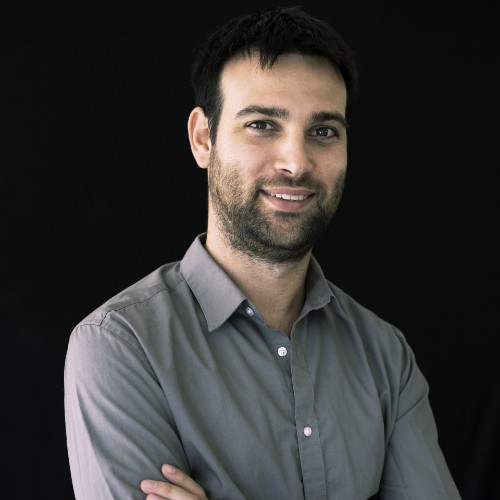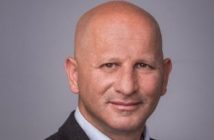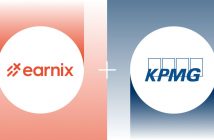Q&A with Yuval Shafrir, Urbanico’s CEO & Co-founder

Yuval Shafrir
What does Urbanico Do?
Shafrir: Urbanico is building a smart-cities’ data fusion platform, helping insurance companies with efficient utilization of hyper localized urban data, to improve risk assessment processes on both actuarial and underwriting levels.
How can this Data of Information can help Insurance companies?
Shafrir: As opposed to industries such as automotive and telco, that have reduced their unit costs by more than 50% over the past 15 years, administrative cost per policy for the P&C insurance industry has remained unchanged or even increased. Technological advances in ML and the exponential growth in the production of data are creating new opportunities for the insurance industry in many aspects of the insurance value-chain: risk categorization, fraud prevention, claims management and even development of novel products such as parametric insurance. Recent EY study on the US P&C insurance industry found annual saving opportunities due to data, totalled up to $157M – $254M for an average personal lines insurer and $675M – $851M for an average commercial lines insurer. But to seize this opportunity, insurers cannot rely on their internal data alone. Carriers who embrace predictive models using third-party data will gain a significant competitive advantage. Urbanico’s data is providing a novel predictive perspective on urban areas, the most significant territory for insurance.
On what insurance segments can Urbanico’s data can be useful?
Shafrir: Urban data, the type of data Urbanico is processing, represents a family of data points that describe the urban landscape. Among these type of data points one can find information on:
- Crime incidents.
- Construction sites.
- Water hydrants.
- Inspections activities.
- Businesses’ permits.
- IoT data: Traffic lights, Waste collection, Air/water quality, etc.
- Car accidents.
- Road closures.
And many, many more.
Thus, as Urban data is touching almost every aspect of living within our cities, it can serve various types of use cases for multiple insurance segments. We’ve found the strongest alignment with the P&C segment and property insurance products in particular.
Urbanico Started it’s journey in the mobility field. What happened since then?
Shafrir: Actually I think our story can provide an interesting view of a start-up’s journey. In the beginning of our process, back in the cheerful pre-pandemic days, the hottest and most promising field that was changing our cities was mobility. From Autonomous vehicles, through new mobility modes such as e-scooters or ride-hailing all the way to historic changes in the shipment and deliveries vertical, new mobility had the strongest impact on the urban landscape.
While even on our early days, we have spotted and validated the need for our product with US insurers, we’ve quickly decided to focus our efforts on mobility. When COVID-19 came about, two interesting processes started simultaneously:
- As cities got into lockdowns and forced massive social distancing restrictions, most movement in urban areas has vanished. People stopped commuting almost at once, causing many mobility players, especially new mobility to take time to restructure their business models.
- As urban lifestyle dramatically changed over night, insurance companies approached, saying that many of their risk assessment models have to be adjusted to the “new normal”, that holds different risk factors, for almost every insurance product out there: How can they price risk for travel insurance policies for a country in which COVID is raging? What is an appropriate risk for commercial property in which 80% of employees work from home? What is a right pricing point for auto insurance in an area which is expected to be under lockdown for the next few months? All these questions made insurers “shot in the dark” looking for solutions.
When we dived deeper, we found so many touch-points of urban data to the daily challenges insurers are facing, even when taking COVID out of the equation. The great interest from the industry, along with its new wave of innovation made us change our focus, and so far, we couldn’t be happier with that move.
How does the changes in the mobility sector affect the insurers?
Shafrir: Generally speaking, I think that there are many ways in which mobility and insurance are affecting each other. The mobility sector is in many cases a catalyst for changes that are affecting the way human lives. For example, the effect of adoption of autonomous vehicles on auto-insurance is huge. I think that even moreso, changes in mobility patterns have great impact on real-estate prices, new shapes of settlements and more, all critical for insurers.
What is your Business model?
Shafrir: Urbanico is working on a very simple and straight-forward business model. As a data company, all we do is sell hyper local urban data standardized to one unified schema. Urbanico is a DaaS company, meaning that we are licensing our data through a simple subscription based model.
What companies are you currently working with? Insurance and non-insurance
Shafrir: We’re still an early stage company and most of our interactions with the insurance industry is under NDAs. All I can say for now is that we are developing POC’s with some of the largest carriers in the US. Other than that, we’ve completed a successful POC with a market leader in the micro-mobility sector before focusing on the insurance industry.
What investments were made in the company so far?
Shafrir: So far we’ve raised a pre seed round from Expert DOJO, a US VC fund and accelerator based in California. We’re now finalizing our Seed round which will be published soon 🙂
Tell me about your professional background and about other key figures in the company
Shafrir: From my early childhood I was always fascinated by entrepreneurship and the ability to build something from scratch. Like most of the Israeli tech industry, I served in an elite intelligence unit under the supervision of the ministry of defence, as a product manager in a techno-operational department. In our department we always had to build products that worked perfectly 100% of the time, which taught me a lot about perfectionism, for better and worse. After my service, I studied physics and chemistry at the Hebrew university of Jerusalem and after graduating, joined a young startup in the retail arena. The 2+ years over there taught me everything I needed to know about the startup journey: founding a team, building a product, pivoting, go-2-market & sales and even merging the start-up into a market leader of the industry. My “partner in crime” and CTO is Yoni Levi, who is reinventing on a daily basis the word Creativity. Yoni is an extremely experienced data scientist with a record of over 15 years leading technology developments in many different environments.


